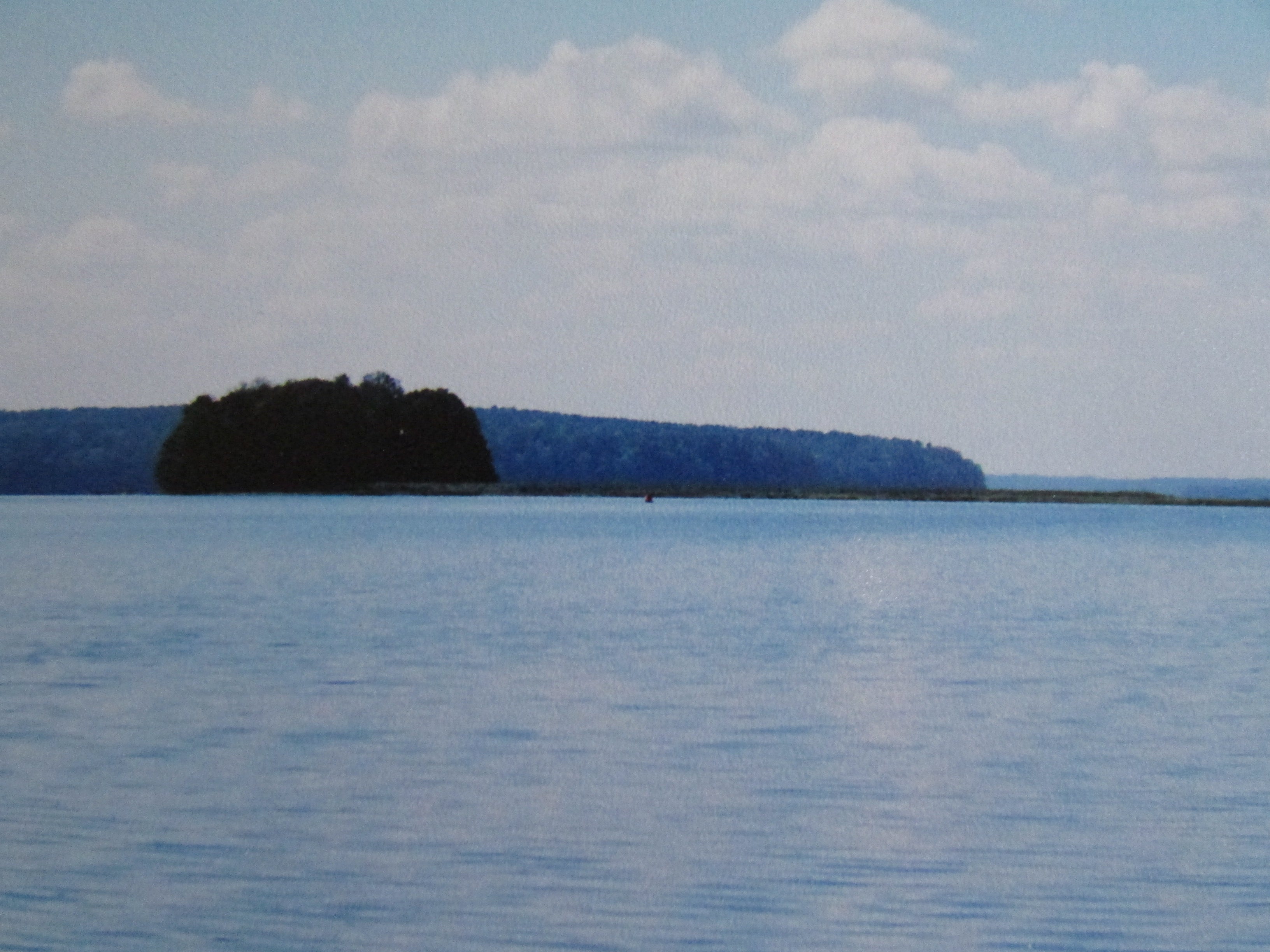Let’s Take a River Cruise
Published 11:45 am Sunday, September 10, 2023
|
Getting your Trinity Audio player ready...
|
With the steamboat, it was all about rhythm. The gentle sway of the deck, the whoosh of the paddle wheel as it slices and splashes water, the kurchuck of the engine, all working in cadence, propelling the steamboat ever forward on her journey.
The steamboat was a vessel full of action and dreams. Bells were ringing and roustabouts were singing as they loaded and unloaded the cargo. Folks were everywhere, yelling back and forth, or having hushed conversations behind closed doors. Who’s on board? Where are they going? What is driving them on this colorful, wild odyssey? What lies ahead down river? What romance! What mystery!
However, in the early 1800s, traveling on the rivers was not only adventurous but sometimes, downright scary. Trouble seemed to jump off the river’s banks and float all around the craft. Too low water or too high water was common because there was no way to control the temperamental rivers. Logs, snags and sand bars sprang up in the paddle wheel’s way as the river tried to preserve her privacy. Along with these problems, the boats were a danger to themselves with fire the primary one. All of these were very much a part of life for the workers on board.
Would you like to know what it was like to ride on a steamboat back in the days when these boats were the queens of the waterways? Let’s do it! We can let our imaginations run wild and have a great time! We can board our boat right here, at Cheney – Griffin Park, claim a place on deck, relax, and watch the beauty of the river go by as well as watch the folks on board interact.
I doubt that anyone who saw a steamboat coming around the bend towards the wharves that dotted the banks at Bainbridge, would ever forget that thrill. First, you would hear the sound of her whistle and see the plume of smoke from her stacks. Then, you would see her, glistening in the sun, painted white and decorated with lacy wooden trimming. Quite a sight to behold.
Next, came the shouts of the crewmen on board as they greeted their fellow workers who were waiting on the shore. When the boat was secured, the Captain would shout, “All Aboard!” This is when we walk down the gangway. Once on board, we are assigned our staterooms.
When the cargo is loaded and every passenger accounted for, the deckhands release the steamboat from her moorings and push her out towards the river. The great paddle wheel in the rear begins to turn, throwing water high into the air. The whistle sounds and the boat sways as we are now moving down river. We look back at the wharf. There are waving handkerchiefs and shouts of goodbye. Bainbridge now is slipping away from our view. We are headed for our destination.
By now, we are moving down river at a somewhat faster rate. Everything looks so vivid in the sunshine. Flowers are blooming on the shore and birds are circling overhead. The paddle wheel has a distinct cadence as it sends droplets into the air which now are making a rainbow in the sun.
After a bit, the boat slows and we make our first stop. This is to pick up twenty-five cords of wood to fuel the boilers. This is enough to take us to our destination.
Next, we hear a bell ring announcing that dinner is being served. Everyone walks towards the dining salon. It is oval shaped, in the middle of the main deck and is surrounded by the staterooms. Its furnishings are more beautiful than imagined. There is shiny wood on the walls and crystal glassware on the white linen tablecloths. Everything sparkles in the illumination that is provided by a new invention, the electric light.
Something smells very yummy and suddenly we realize that we are hungry. White coated waiters bring us the meal which has been prepared by a professional chef. While we eat, the Captain makes rounds. He cuts quite a romantic figure, in his elegant looking cap and the golden braids on his uniform as he speaks to everyone and makes sure were comfortable.
After our meal, we set upon the deck watching the ever-changing scene along the river. The willows dip their fingers into the water and the streams make a gentle sound as they flow into the river adding to the depth of the water. Soon the sun begins to sink behind the trees that cover the banks. The birds begin to seek their roosting places. They greet each other with their calls. The owls and the whip-o-wills ask their questions and receive their answers, bouncing in the air, from far and wide.
We decide to stay on deck in the moonlight for a while. The air is balmy and the sound of the engines are like a music to our ears. The whoosh of the paddle wheel is beginning to lull us into a relaxed and sleepy state. As we stare at the moon, our boat begins to slow down.
Then, as if coming from some enchanted land, the crewmen sitting up on bales of cotton on the deck below, begin to sing. Bright electric lamps are turned on. The surface of the water reflects the steep banks of the river, topped by a wall of woodlands. All this makes a perfect surrounding for the voices of the singers.
Inside the salon, there are lively games of cards going on. However, we are ready to retire to our stateroom. Though the cabins are plainly furnished, they are comfortable for sleeping. Since they are located in an oval on the outside of the salon, each one has a window providing an opening to let in the fresh night air.
The morning breaks with the sunlight streaming through our window. We are told that our destination is just ahead. Excided, we go out on deck and watch for the first glimpse of the landing. Situated up on a high bluff, safe from flood waters, are a small house, a store and a small warehouse. All around are stacked several hundred barrels of resin and turpentine. Near the warehouse is a team of eight oxen yoked to a large wagon, also loaded with barrels. Some of the oxen are standing and others are lying down, all peacefully chewing their cuds. Close by stands the teamster, holding his massive whip which he can make pop like a pistol.
As soon as the boat is tied to the wharf, the deck hands begin unloading her. How amazing it is to watch these men. They can handle a bale of cotton and barrels of resin and turpentine with remarkable skill. While they work, these stevedores sing or hum in harmony. They repeat many variations of the tune by singing in a different key. At times, someone would pause to wipe the large drops of sweat from his face with the big bandana which is tied around his neck.
While eating our tasty breakfast in the salon, the whistle from the steamboat signals that it’s time to go back up to Bainbridge. A little ways down, we once again are stopping. The deck hands disembark and tie our craft up to several secure trees as others go out on the banks and begin collecting the wood that is stacked there. We learn that there are men, who for a living, cut wood from the forests and pile it onto the banks in strategic places for the steamboats to take and reload this necessary fuel. Quickly, we return to our upward journey.
We now notice that since our stop, the excursion steamer, “Sun”, is just up ahead of us. She is famous for her dining room where the walls are covered with plate glass mirrors. Since we know history, we know that she sank at her wharf in Albany in low water. For some time afterwards, her wreck could be seen.
When our steamboat would gain on her, she would then drop back. However, now we are passing her. This is a little scary considering our size compared to hers and the width of the Flint River. Nevertheless, we are all waving handkerchiefs and shouting hellos.
Whenever steamboats arrived at Bainbridge, it was a social event. It didn’t matter if you were young or old, rich or poor, male or female, the steamboats attracted everyone. Ladies wore their finest dresses and businessmen their tailed coats while laborers wore their work clothes. All came to greet the boat.
Upon landing, we find that horse drawn flat wagons are there to meet us. These wagons can accommodate quite a few passengers as there are long seats that go down each side. Some of the wagons can even take cargo on them along with the passengers but mostly wagons were either strictly for cargo or passengers.
As we go up to Water Street, we are certainly glad that we went on our cruise. True, the steamer was not the love boat but it was very enjoyable. As a whole, the trip was a pleasure.
Of course, riding on a steamboat and working on one, were two very different things. To workers, the rivers were beautiful tyrants. It could charm you into submission but just as easily, take your life. Working on the river was physically demanding. It required long hours with little sleep, days away from loved ones, backbreaking labor and the threat of death following you.
The lower deck of the boat, where the dangerous boiler transformed water into steam power, was the domain of the workers. Here is where they ate and slept. A dozen of them were usually required to work while the boat was underway. The others waited for their shift.
As firemen stoked the coals which heated the water that turned the great paddle wheel, the stevedores would sit around on the cotton bales. Some would nap. Some would play cards. During the day, when the boat stopped to load and unload freight, the stevedores entertained onlookers with their talents, like spinning barrels full of turpentine and rosin or bouncing cotton bales downhill to the wharf.
With the barrels spinning before them, the stevedores ran down the steep hill to the boat. It was once said that they moved so fast that they appeared to be running out of control. They also knew how to put a spin on the barrels so that it curved and stopped abruptly, as though it knew his wishes. Sometimes, it took two of them to restrain a barrel as it rolled down a bank.
Another was watching the stevedores load bales of cotton on board. Two men would start a bale down the steep bank to the wharf. The heavy cotton bales were permitted to tumble down of their own will. They would go over and over at a terrific speed that made watching very exciting. By the time the bales hit the gangplanks, they were bouncing like a ball. On the deck of the steamer, two roustabouts caught it at each end with metal hooks. Still bouncing, they stacked the bales two or three high.
This was dangerous work. Roustabouts often got their hands caught between a barrel and the edge of the wharf, smashing it or severing fingers. Also, the force of a tumbling, four-hundred-pound cotton bale could easily knock a man out. There also was the danger of falling overboard and drowning.
In 1876, two workers were lost in a single night on a boat working on the Flint River near Bainbridge. A steward fell overboard and no one knew and the paddle wheel smashed into him. The engineer heard the wheel thumping against something. Thinking he had hit a log; he stopped the engines but found nothing and proceeded. Only later, when the officers needed the steward did they realize what had happened. That same night, a deck hand apparently blinded by the light from the torches, stepped overboard and was never seen again.
Fatigue caused many accidents. Deck hands were on call twenty-four/seven when the boat was moving. Even though they rested between stops, they sprang to work at every landing, rain or shine, loading and unloading freight. Since a round trip usually took six days, roustabouts went a week before getting a full night’s sleep.
Since these men worked and slept by the boilers, they were very vulnerable to accidents involving fire. In one incidence, as the deck hands lay asleep on their mattresses, the boiler exploded, blowing one man overboard to his death and burning two others to death instantly. The others were so badly scalded that they screamed for God to take them.
Fire was a constant danger to crew members because cotton is highly flammable. All it took was one spark to set this cargo ablaze. Sometimes the freight itself was dangerous. For instance, around the turn of the century, tupelo honey was a big money maker. However, sometimes bees would escape from the hives as they were being loaded on board. Just imagine the chaos that caused.
However, to the sailors on these boats, the river was home and they didn’t want anything else. One sailor described it in his diary: “When you rose at dawn you could still smell the night air. Then as you worked these smells would turn into day smells and you would hear the deck hands singing and chatting. The sound of the whistle of the steamboat was your music.”






